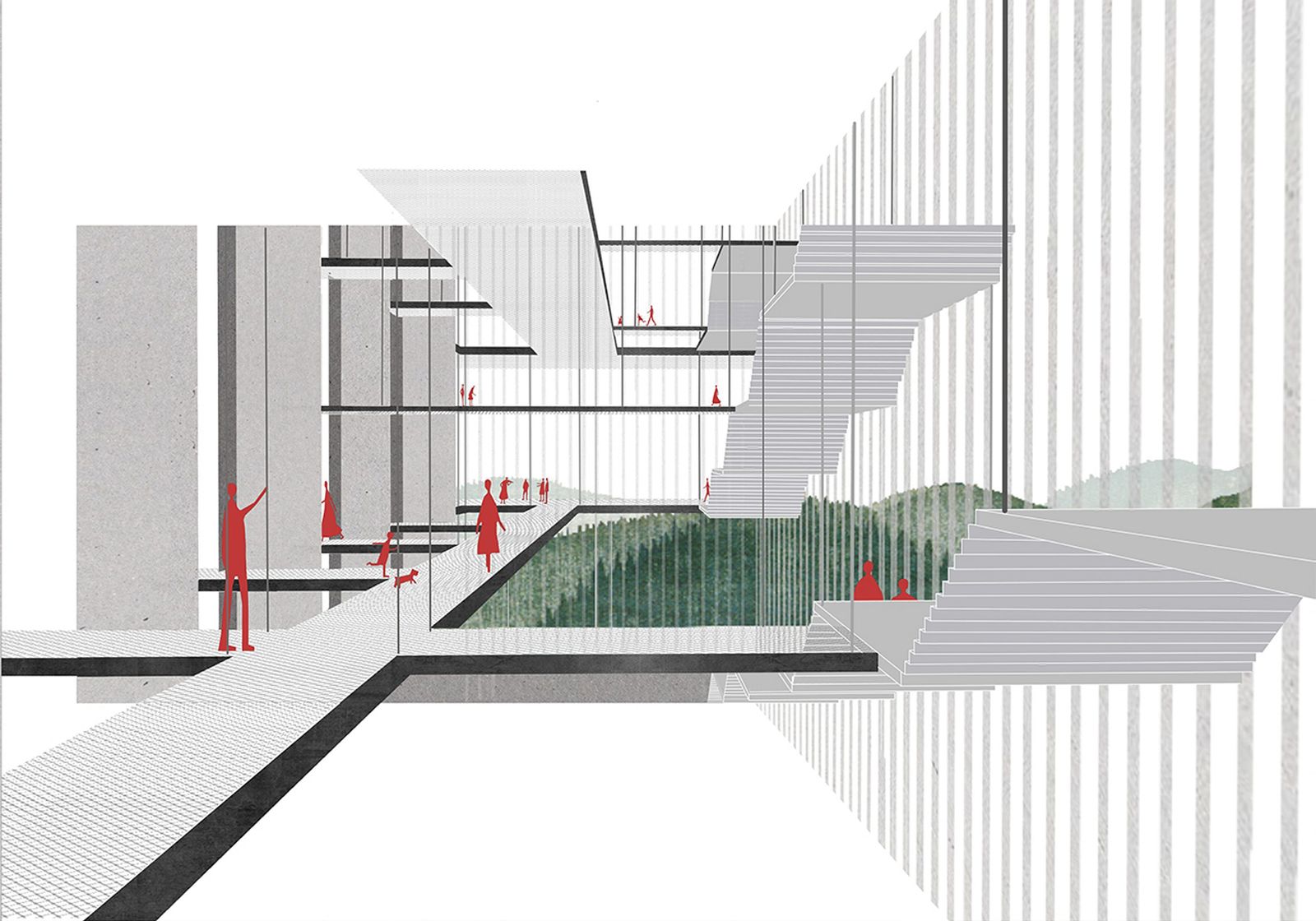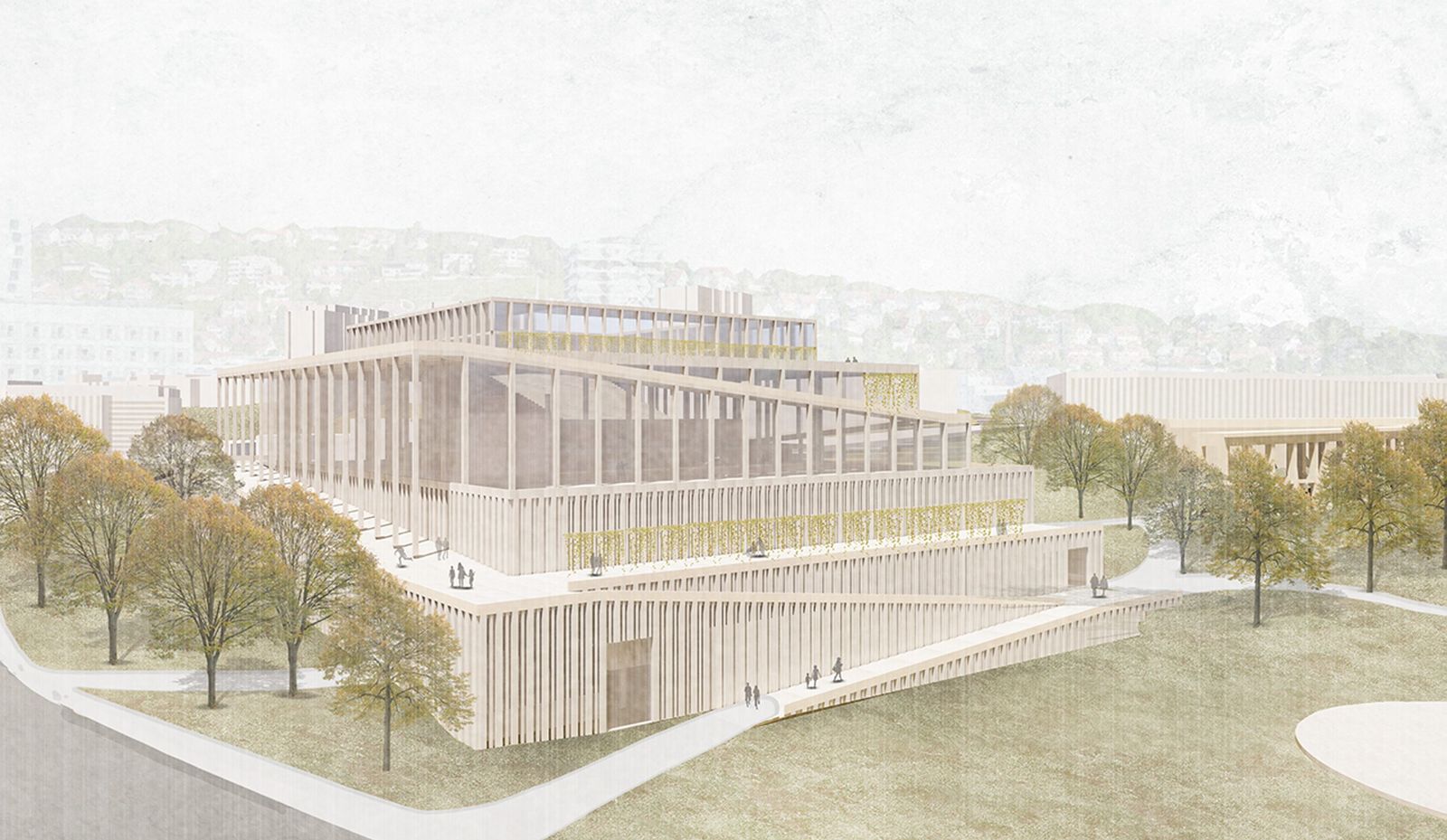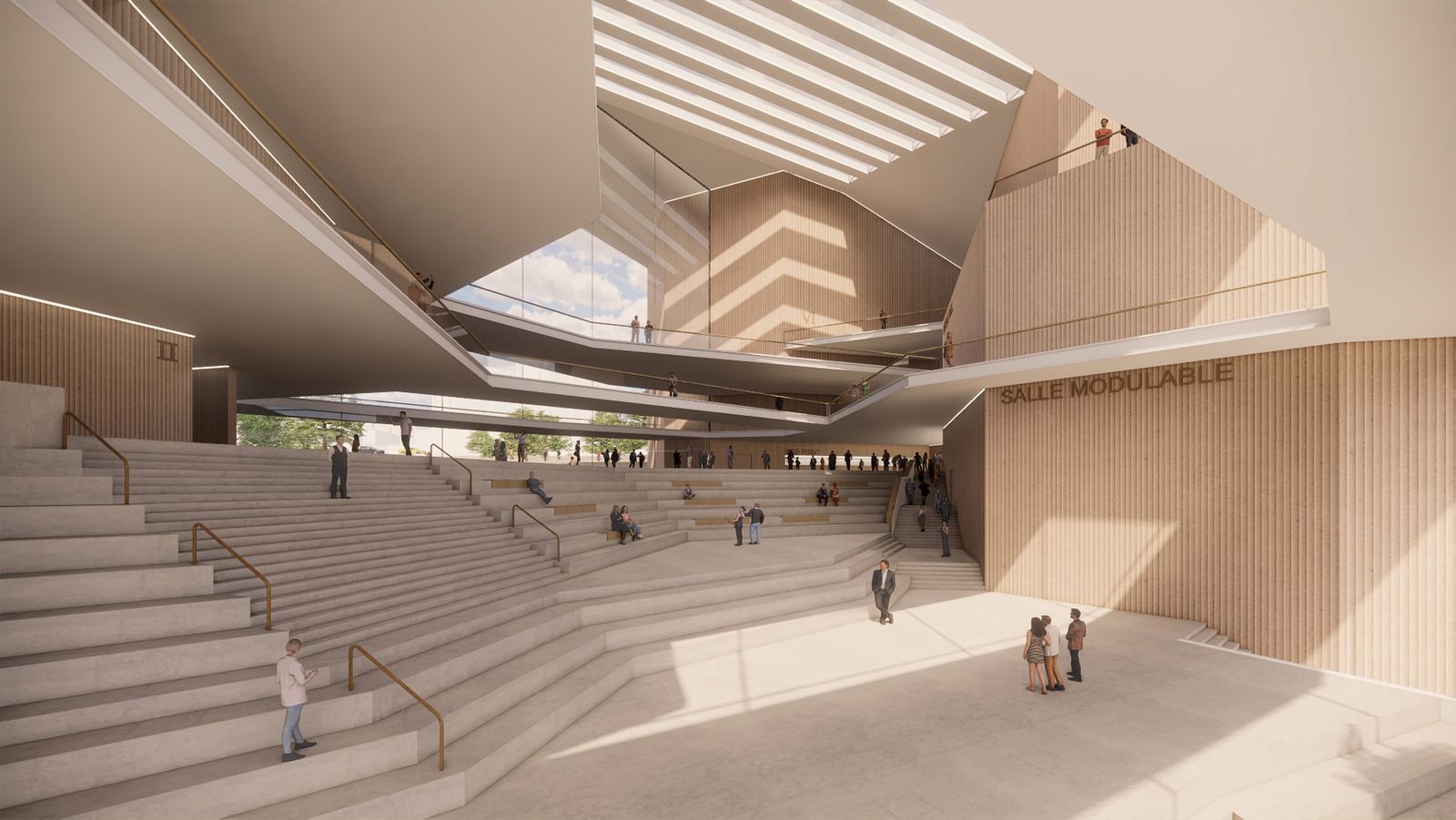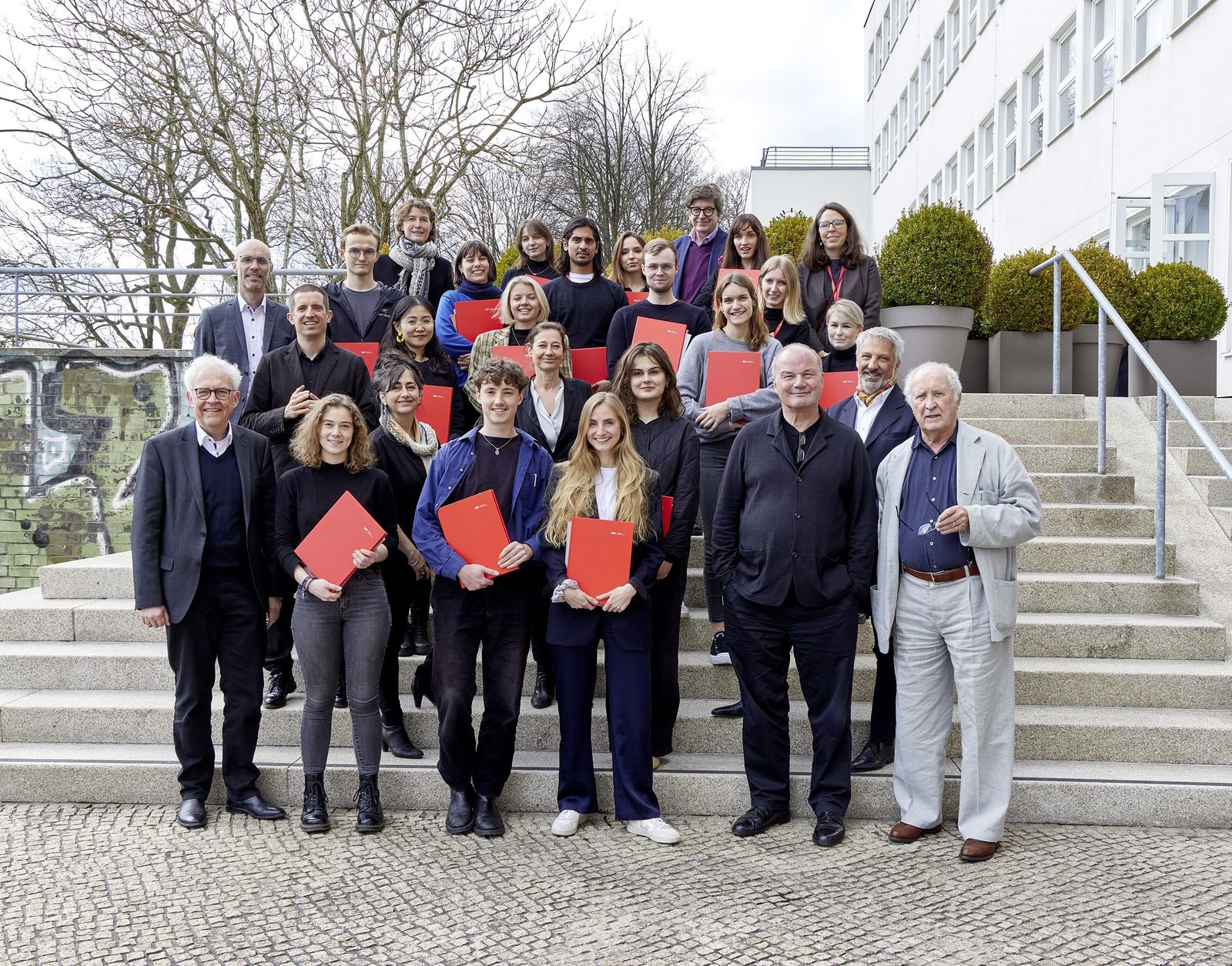Exhibition UMBAU. Nonstop Transformation // April 10 - May 5, 2025 - Jiushi Art Salon Shanghai
A concert hall for Stuttgart
Four design scenarios were developed at the aac’s spring workshop
The quality of life in a city is closely tied to the range of cultural events available. The Stuttgart metropolitan region, which is one of Germany’s most prosperous, has always had the benefit of a rich program of cultural events. However, apart from the Liederhalle, there are no adequate concert halls for the three well-known symphony orchestras, and hence the available dates for performances are limited, also with respect to guest appearances by internationally renowned orchestras and performers. For this reason, for several years there have been efforts on the part of Stuttgart citizens to establish another such venue. In cooperation with the Konzerthaus Stuttgart e.V. action group, this spring the aac organized a workshop in which appropriate design ideas were explored.

Group 4 © aac Academy for Architectural Culture
On a site at the intersection between the Europaviertel and the future Rosensteinviertel quarters, which formerly belonged to the railway complex and became vacant as part of the Stuttgart 21 redevelopment of the railway station, the scholarship students of the aac were asked to develop a concert venue with halls suitable for the recording of performances as well as for the playback of digital content. In addition, the brief called for public meeting areas and music teaching facilities.

Group 1 © aac Academy for Architectural Culture
The workshop began with a three-day excursion to Stuttgart and Munich. In Stuttgart the participants were able to gain an impression of the site. A city tour including visits to the Liederhalle and the city’s most important culture venues, from the Schlossgarten park to the State Theater, the State Gallery and the John Cranko School (ballet) through to the Bibliothek 21 library, conveyed important impressions of the city. After the visit to the Liederhalle, Nikolaus Goetze, together with members of the Konzerthaus Stuttgart e.V. action group, presented the design brief. The following day, the group traveled to Munich to visit the Isar Philharmonic. Back in Hamburg, work started in the aac studios. The four teams of four students were mentored by experienced tutors. Lectures and regular crits with the visiting professors Prof. Jörg Friedrich of pfp architekten from Hamburg, Prof. Oliver Thill of Atelier Kempe Thill from Rotterdam, and Jette Cathrin Hopp of Snøhetta from Oslo rounded off the comprehensive teaching curriculum.

Group 2 © aac Academy for Architectural Culture
The designs of the four groups provide different conceptual responses to the space requirements as analyzed by the Konzerthaus Stuttgart e.V. action group, and deal with the transition between the two different levels straddled by the site. Group 1 vertically stacks the functions: the most public part – the meeting areas – face the park, whereas the concert halls are located above, with the music school crowning the building off. Group 2 designed an urban forum around which the three functions (concert hall, multipurpose hall, and the music school) are arranged as translucent standalones. Group 3 worked with different terraces, which accommodate the respective functions. They spread across the site like an architectural carpet and are unified by a roof that is reminiscent of the neighboring vineyard terraces. Group 4's starting image is that of a machine. Opaque on the outside and floating above the landscape – the design is functionally flexible on the inside. The results were exhibited on April 8th in the premises of the aac in Hamburg.

Group 3 © aac Academy for Architectural Culture
Workshop Leaders Prof. Dr.-Ing. h. c. Volkwin Marg and Dipl.- Ing. Architekt Nikolaus Goetze
aac Team Enno N. Maass, Anja Meding, Sona Kazemi, Gabriela Hopf
Tutors (alphabetical order) Fabian Faerber, Walter Gebhardt, Prof. Philipp Kamps, Sona Kazemi, Anja Meding
Scholarship students (alphabetical order) Merlin Bieling, Bernadetta Budzik, Patrick Ehrensberger, Merle Fülling, Jacqueline Ildikó Horn, Bernadette Johanna Koller, Anke Langenkamp, Johanna Meßner, Miriam Oehrlein, Daria Pietruczynik, Benedikt Radloff, Wadir Sarwar, Laura Michaela Speckl, Zuzanna Winiarska, Anika Janna Noemi Zeman, Zhang Xinyuan
